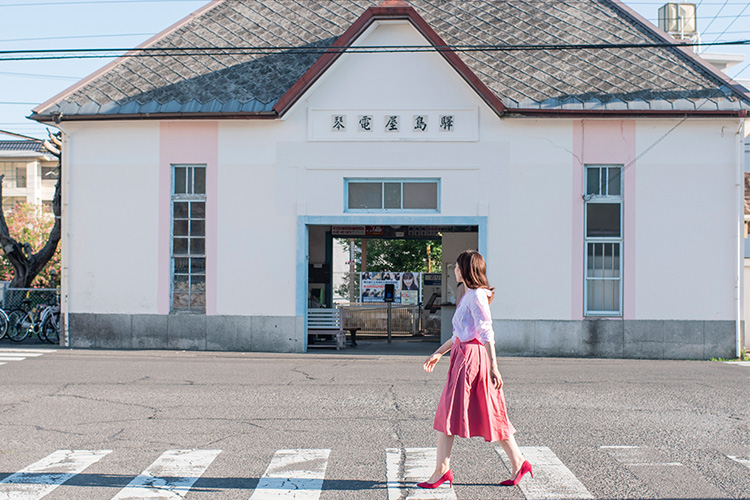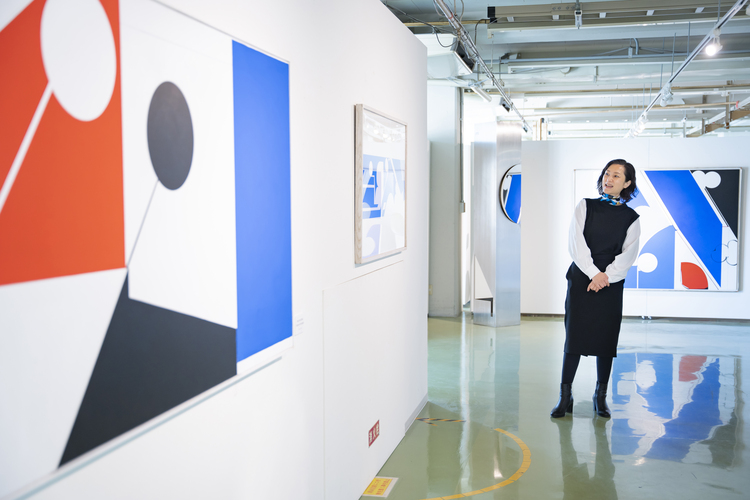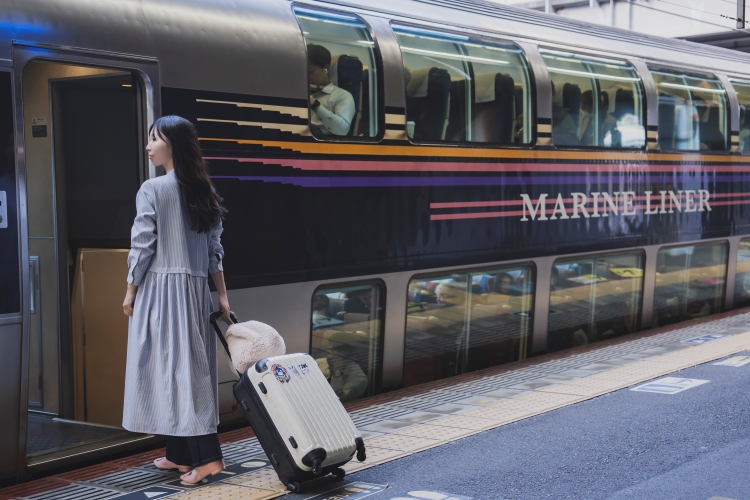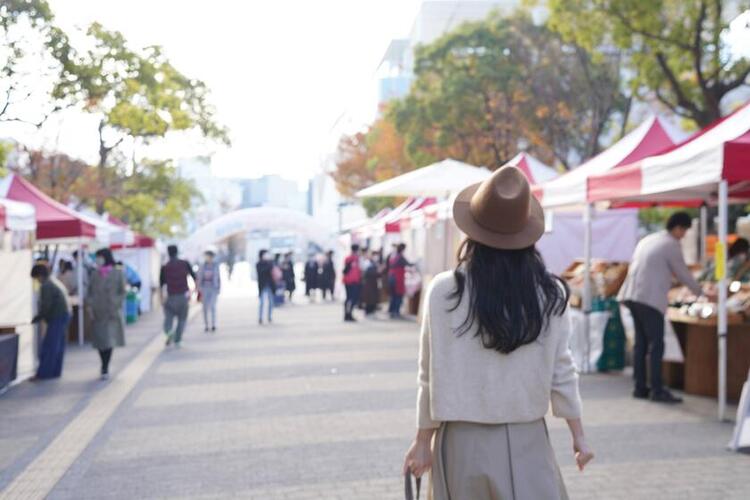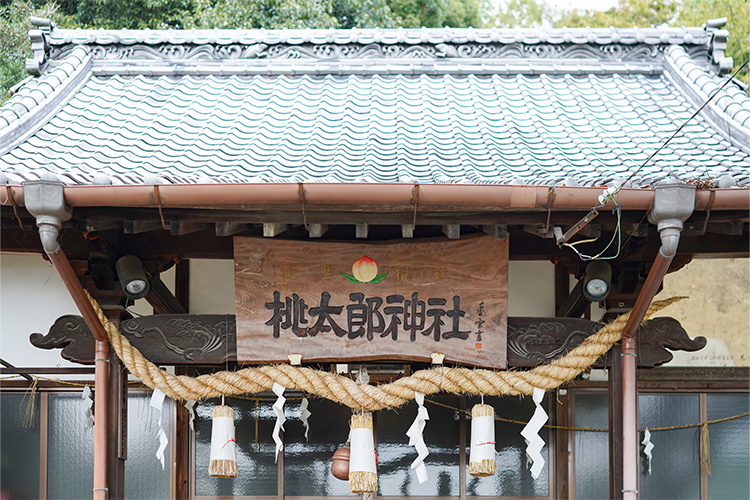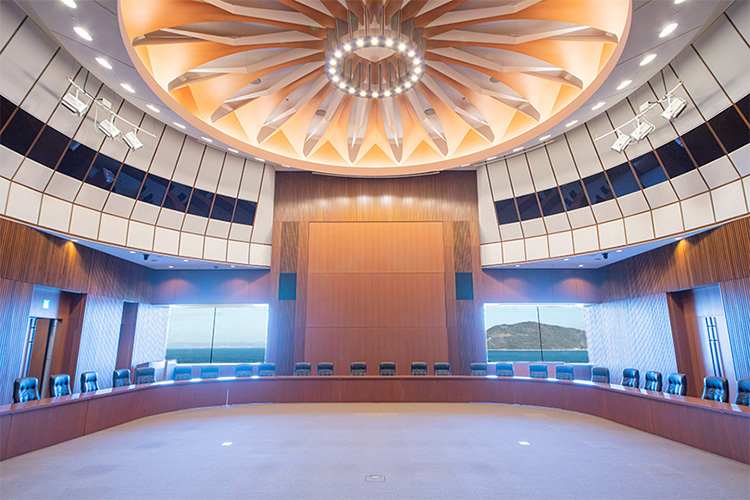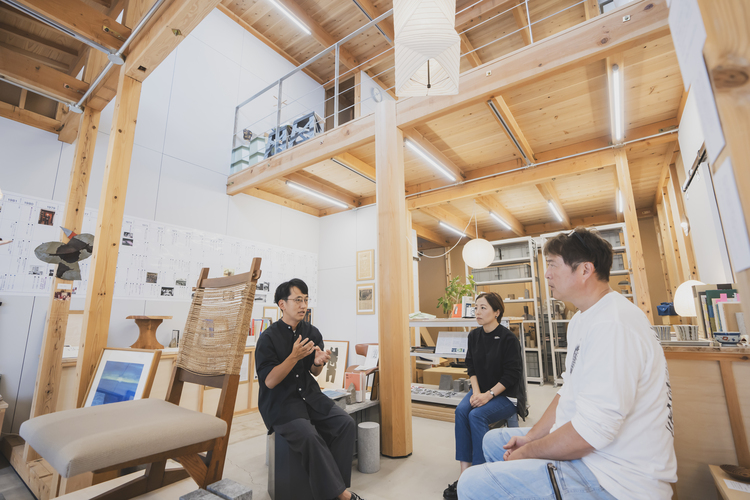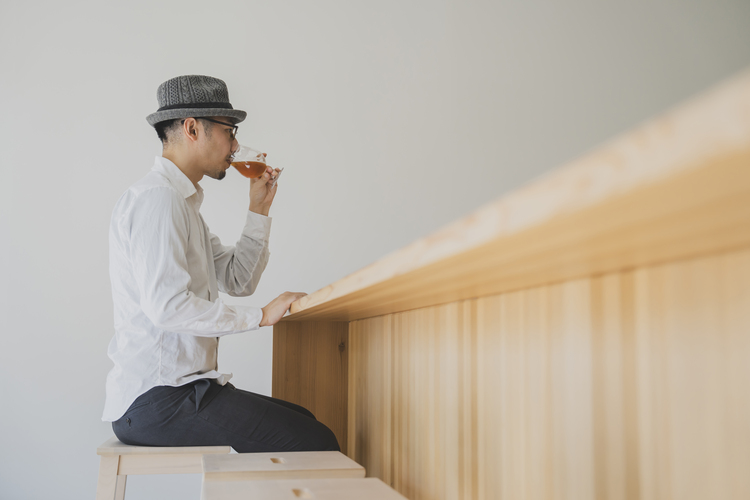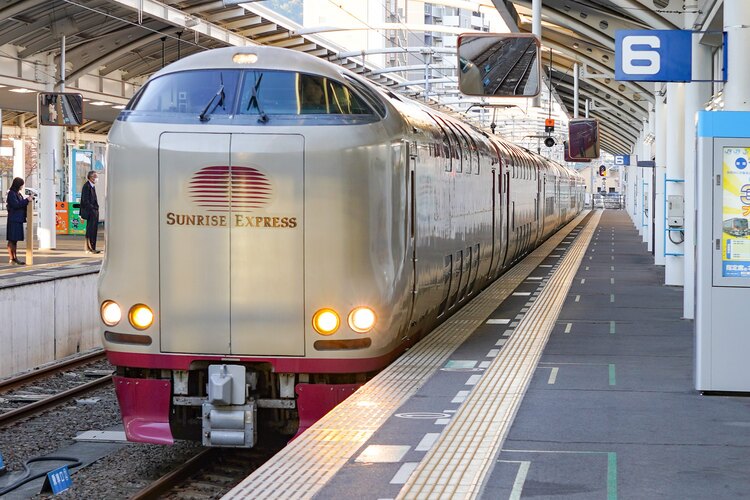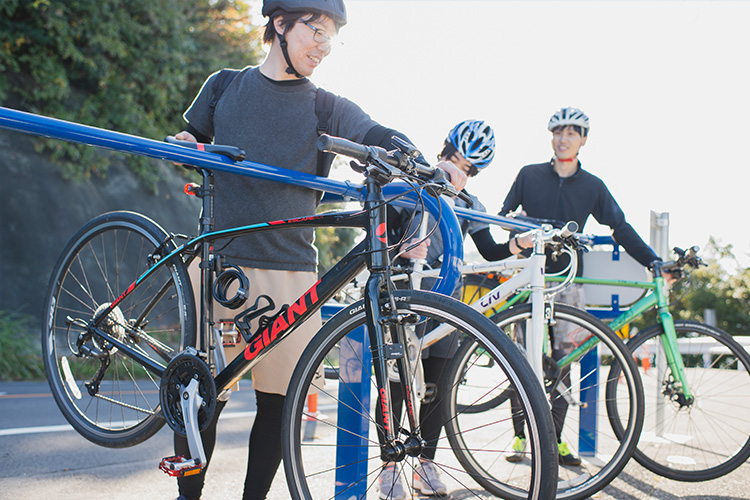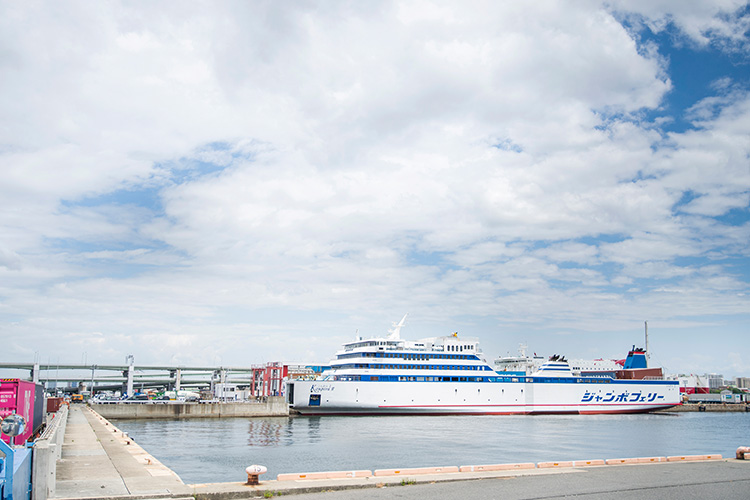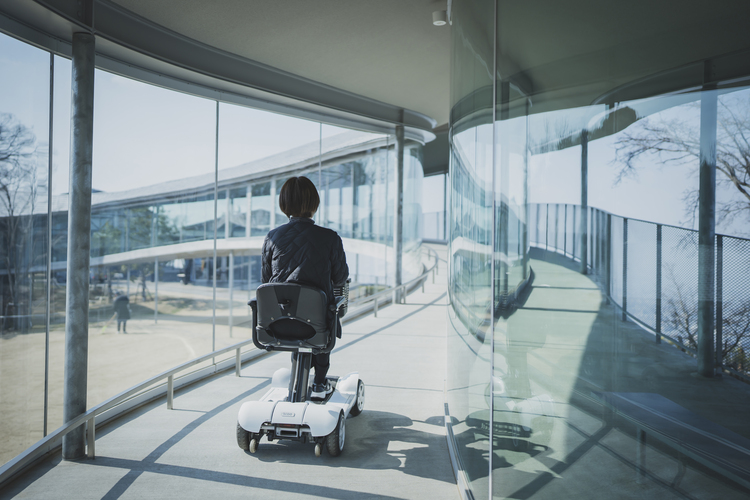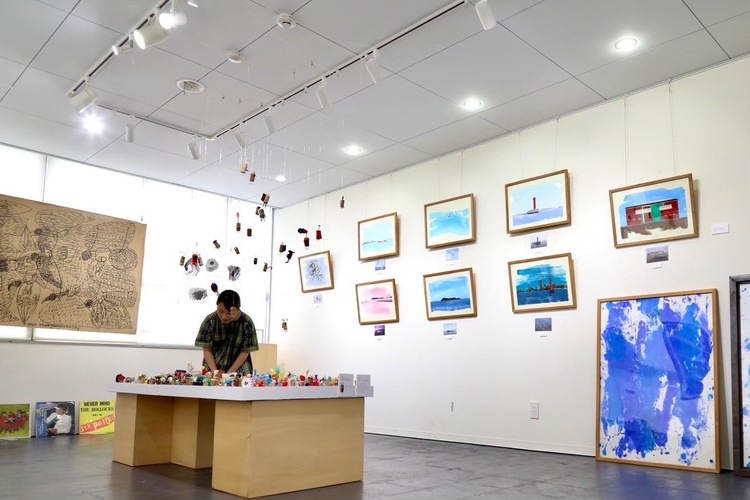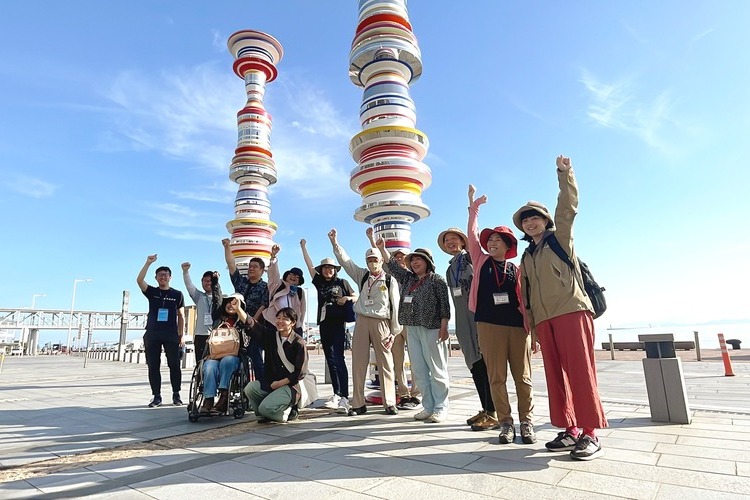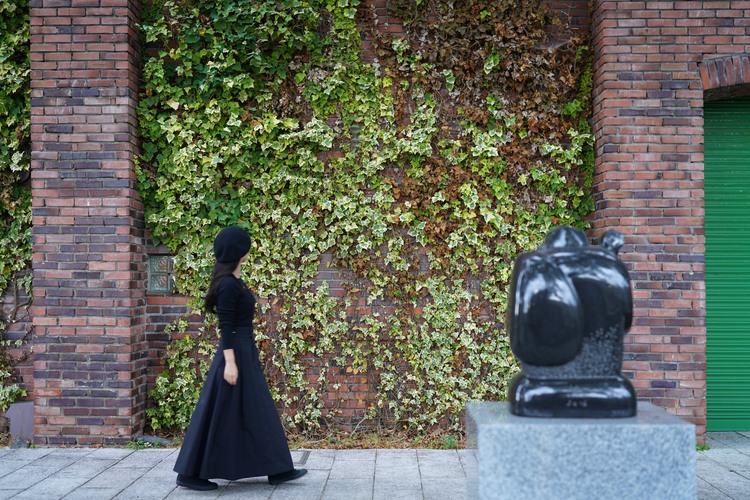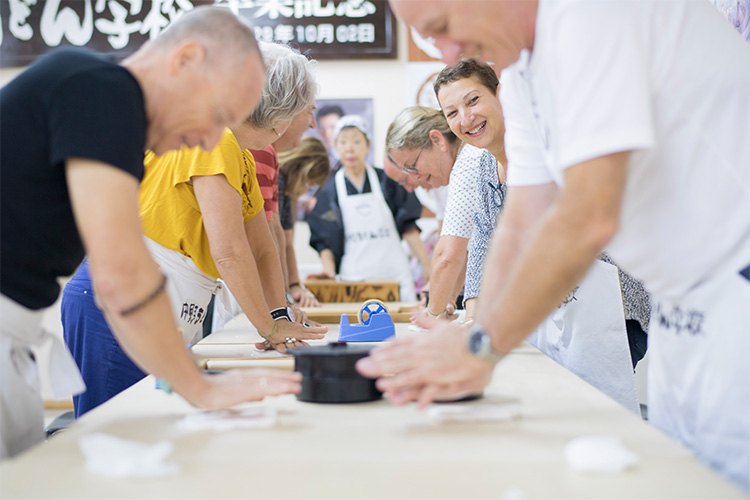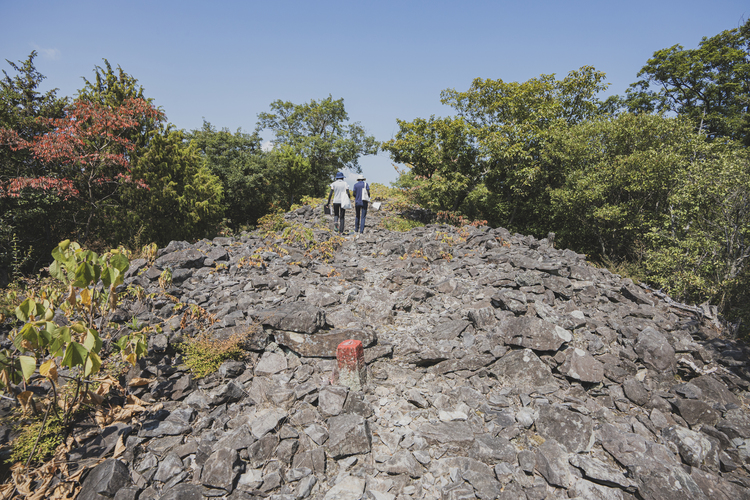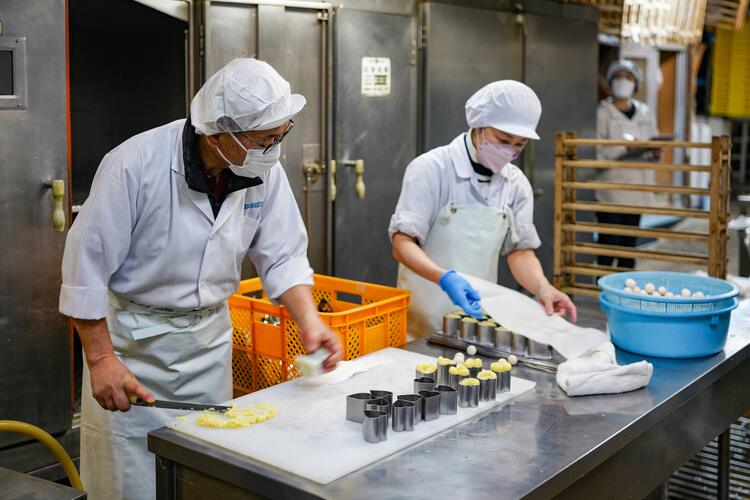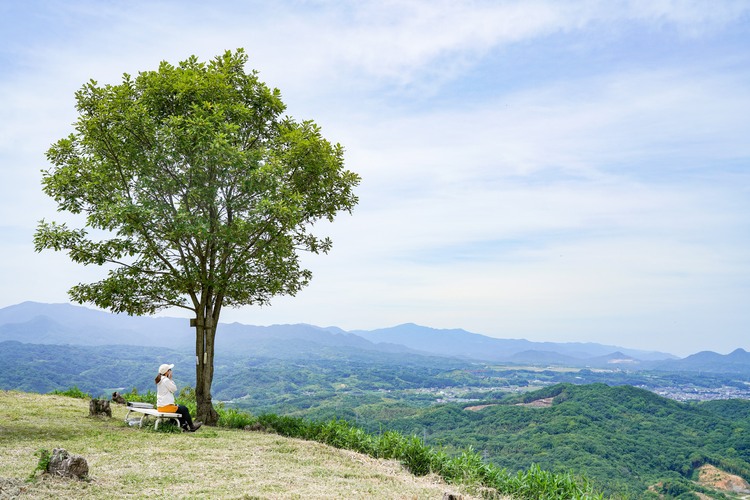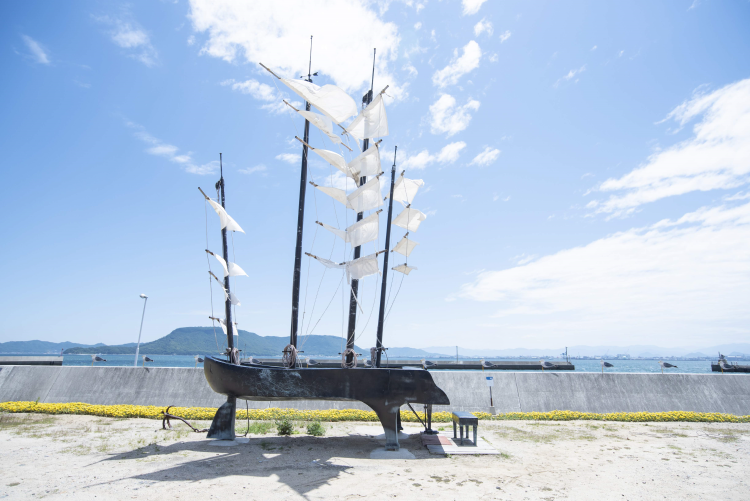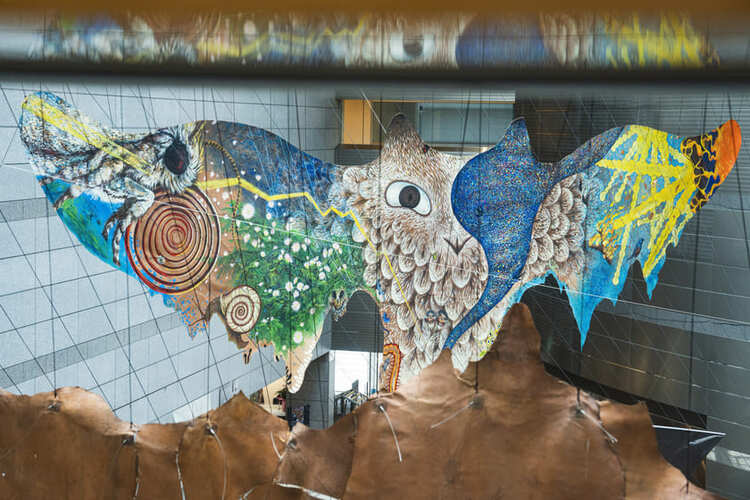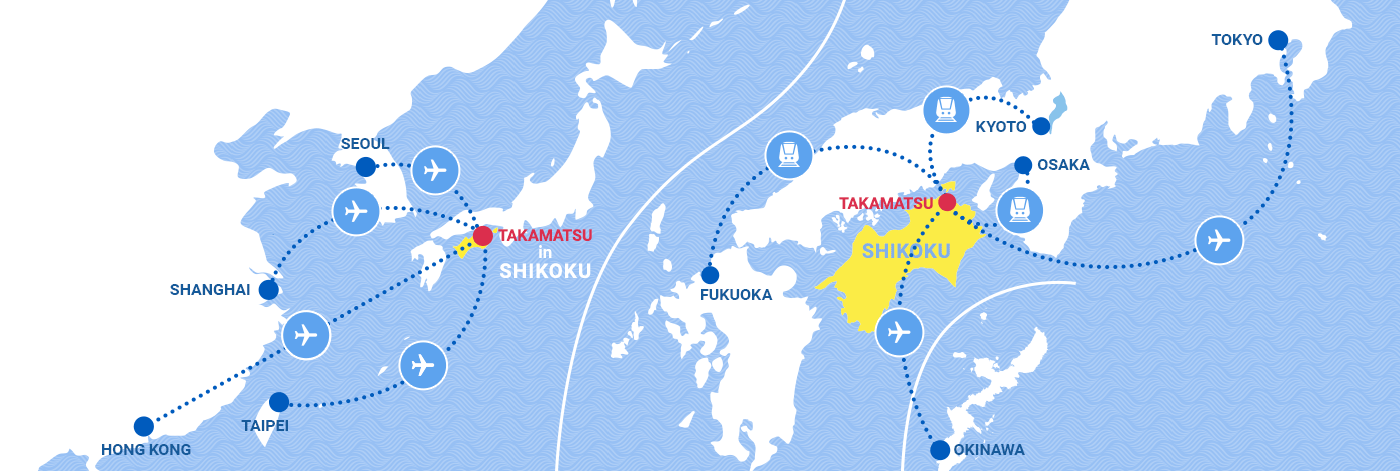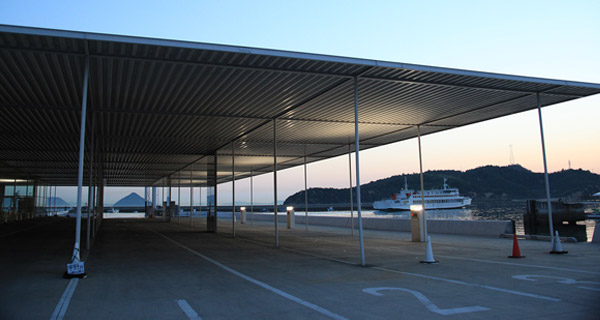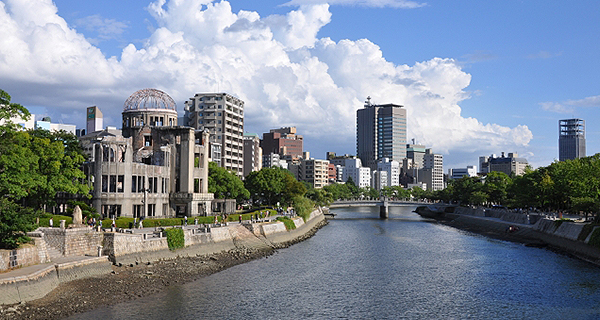
Goshikidai is a popular destination for driving located on the border of Takamatsu-shi and Sakaide-shi in Kagawa that boasts a lovely view of the Seto Inland Sea, including along the Goshikidai Skyline.
Takeshi Kawashima is a contemporary artist representative of Takamatsu. Enchanted by the landscape, he opened the Takeshi Kawashima Art Factory Museum as a studio and gallery at the base of Goshikidai.


I visited the Takeshi Kawashima Art Factory Museum which faces Tarumi Bay and is surrounded by the mountains of Goshikidai. It was about a 20-minute drive from Takamatsu-shi to Sakaide on Kagawa Prefectural Road Route 16.


From the parking lot, you climb the hill to see the entrance of the Takeshi Kawashima Art Factory Museum. The iron engravings by the entrance welcome visitors.

The shiny silver walls are made of empty cans.

You can see the light blue of the Seto Inland Sea through the window.


Takeshi Kawashima was born in Takamatsu, Kagawa in 1930 and graduated Kagawa Prefectural Takamatsu Industrial High School (currently, Kagawa Prefectural Takamatsu Kougei High School).
He majored in oil painting at Musashino Art University and studied at the Yoyogi Printing Institute. Leaving Japan for the U.S.A. in 1963, he pursued a career in New York for 53 years.

Takeshi Kawashima and his wife Junko
Participating in the first Setouchi Triennale in 2010, he rediscovered the charm of his home, which caused him to move back to Kagawa. The Takeshi Kawashima Art Factory Museum was established because of the location of the former factory in Goshikidai overlooking the sea.
The fundamental theme of his works is human.

Let's look around and the art with Ms. Hiraga, a museum staff member.

The Takeshi Kawashima Art Factory Museum displays art created from the 1960s to today.
His love for people is a consistent thought that exists in his creative work while the themes of his work changes over time.
Sometimes, people ask him what his work expresses. He asks them in return, "What do you think it is?" Kawashima wants viewers to imagine and enjoy his works freely, as they wish to.
Red and Black (the 1960s)

This series was created in New York in the 1960s. While the high-rise buildings look the same, there are different human dramas in the different windows.
One of the works in the Red and Black series was selected to be included in the collection of the Museum of Modern Art (MoMA). He said that this encouraged him to continue creating.

His art is popular among children too, inspiring their imaginations. The children think parts of the artwork look like ghosts, or that certain shapes are cool looking.
Blue and White (from 1970 to the 1990s)


The Blue and White series depicts human drama under a blue sky and white clouds, exiting the windows in Red and Black. Blue became the eternal color for Kawashima.
Dreamland (from 1990 to 2001)

The theme of this series is paradise in this world. Kawashima tried to express paradise in this world while priests claim the existence of paradise in another world.

Letters included in the art are the initials of the names of the team members that created them. The title J (Junko)・T (Takeshi)・R・M・A・R expresses his gratitude.
Kaleidoscope Senpenbanka - Mange - (2001-)
Kawashima was devastated when the 9/11 attacks occurred in 2001. His atelier was about ten minutes on foot from World Trade Center. He was emotionally attached to the World Trade Center because he had held a group exhibition there. Kawashima could not draw anything for about a half year after that.
He created Kaleidoscope while thinking of the people living their lives amid change, using colors and shapes flowing from inside him.

Different colors are used for paper cutouts of the same shape. Magically, a small difference makes a big difference in impression.
Space series (2016-)


He started to create the series when he moved to Kagawa in 2016.
As of 2022, he is still continuing to create art at the age of 92.
The Space series is evolving along with his life.


The Takeshi Kawashima Art Factory Museum usually changes its exhibits twice a year.
The appeal of the museum is partly attributable to its location, where you can enjoy the landscape of the Seto Inland Sea and his art at the same time. You will become inspired again each time you visit the museum.
Drawing is living
"I can see a difference in the facial expressions of visitors before and after they spend time here," said Ms. Hiraga. They look refreshed and happy when leaving the museum.
They may feel Kawashima's love for people, looking at vivid colors and rhythmical shapes.


Kawashima looks very serious while painting.
"Why were you born?" He is asking himself this everyday when creating art.

Life is a white canvas. What lines do you draw? What colors do you use? It depends on how you live. Drawing is really living.
His paintings used to be displayed at school when he was in elementary school. Others praised his paintings very much. He thought that he would become a painter. He would often paint for girls when they asked him to. It is a happy memory. Since then, he has painted pictures for over 80 years.

The answer to his question, "why was I born?" may be hidden behind the colors and shapes.
Museum shop

The museum shop sells art books and goods. You can feel close to art if you display it in your room or wear these goods.
Information
| Facility name | Takeshi Kawashima Art Factory Museum |
|---|---|
| Address | 1411 Tarumicho,Takamatsu,Kagawa |
| Business holiday | Mondays,Wednesdays,Fridays,and Sundays *May be temporarily closed |
| Operating days | Tuesdays,Thursdays,and Saturdays(Open or closed on special occasions) |
| Reservations required during the new year holiday season (December 29 to January 3). | |
| Operating hours | 10:00-16:00 |
| TEL | 087-802-6888 |
| URL | https://kawashima-af.com/ |
| Parking | Free parking: 50 |
| Supported languages | 日本語 |
The Goshikidai area overlooking the Seto Inland Sea
There are some places scattered around the Goshikidai area where you can enjoy the view or learn about the history of the Seto Inland Sea.
Osaki no Hana

Osaki no Hana is a popular place at the tip of Goshikidai where you can enjoy a fantastic view of the Seto Inland Sea. The light pink of flower shows up against the blue of the sea during the cherry blossom season.


You can see the rice-ball-shaped island called Kozuchijima.
You can enjoy cycling there.
Cycle carefully because the roads are narrow and there is a lot of traffic.
Seto Inland Sea Folk History Museum

Pedal from Osaki no Hana up to Goshikidai Skyline. There you can see a stone building that looks like an old castle.

Tadashi Yamamoto designed the Seto Inland Sea Folk History Museum. The architect from Kagawa won the AIJ Prize in 1975, and his work was selected for inclusion in the Kokyo Kenchiku 100 Sen (100 selected public buildings). The museum is one of the exhibits at The Setouchi Triennale 2022.




The museum exhibits tools and articles related to fisheries, agriculture, and life in the Setouchi Region. Marine carpentry skills and techniques were developed in the region due to the complicated tidal currents peculiar to the Seto Inland Sea. The building of ships is reproduced, and materials connected to boating are displayed at the museum, including nearly 6000 national cultural properties.

Use the staircase that looks as if it rises to the sky to get to the rooftop balcony.


You can enjoy a peaceful view of the mountains, the sea and a village where Setouchi culture has developed.
Information
| Facility name | Seto Inland Sea Folk History Museum |
|---|---|
| Setouchi Triennale 2022 Artworks | tk26「Seto Inland Sea Folk History Museum」 |
| Address | 1412-2 Tarumicho,Takamatsu,Kagawa |
| Regular holidays | Monday (the following day if Monday is a national holiday),and the year-end and new-year holiday *May be temporarily closed. |
| Business hours | 9:00-17:00 * The entrance closes at 16:30 |
| TEL | 087-881-4707 |
| URL | https://www.pref.kagawa.lg.jp/kmuseum/setorekishi/index.html |
| Supported languages | 日本語 |
Masayuki Nagare, Matakimai (sculpture, Osakiyama Enchi)

Matakimai is installed at a quiet place at the end of a small path lined with trees in Osakiyama Enchi.

Matakimai means "please come back" in the local dialect of Kagawa. The work expresses how people walk when stepping over the islands of Setouchi.

The opening of the work provides a framed view of Seto Inland Sea. It may show you unusual aspects of the sea.
Information
| Facility name | Masayuki Nagare,Matakimai |
|---|---|
| Address | Kisawa,Ougoshi-cho,Sakaide-shi,Kagawa |
Mammoth Playpark TARUMI (Tarumi Central Park)


The facility opened in April 2022 under the concept of being a park for people of all generations to gather and the center of community activities.
There is the large playground made in France in the center of the park that is full of a sense of openness. It is a tribute to Tours, France, a sister city of Takamatsu-shi.


You can enjoy the cherry-lined path and the rose garden in the spring.
Information
| Facility name | Mammoth Playpark TARUMI (Tarumi Central Park) |
|---|---|
| Address | 458-3 Tarumicho,Takamatsu,Kagawa |
There is bicycle parking in the Maisupo Gymnasium parking lot in Maisupo Sports Center TARUMI which is a neighboring facility.
Gathering date:2022.5.16






